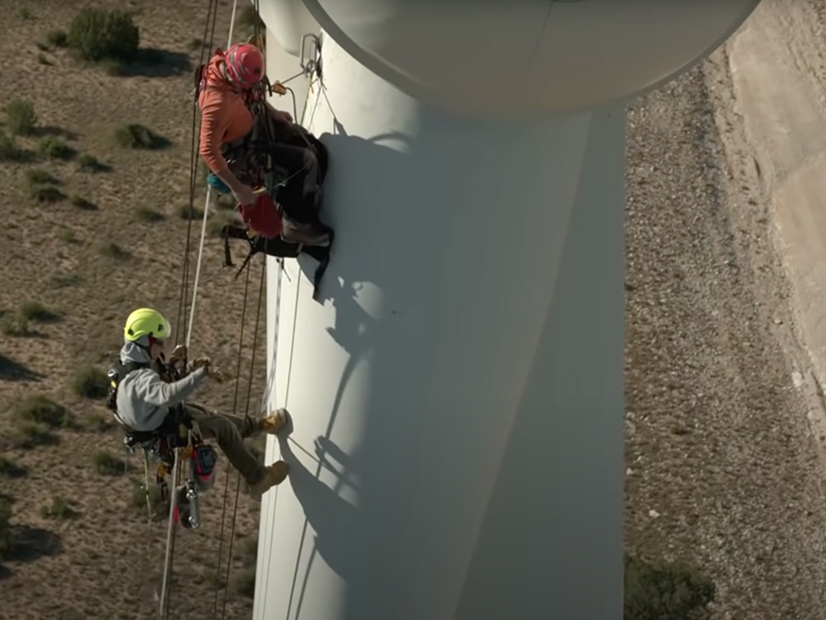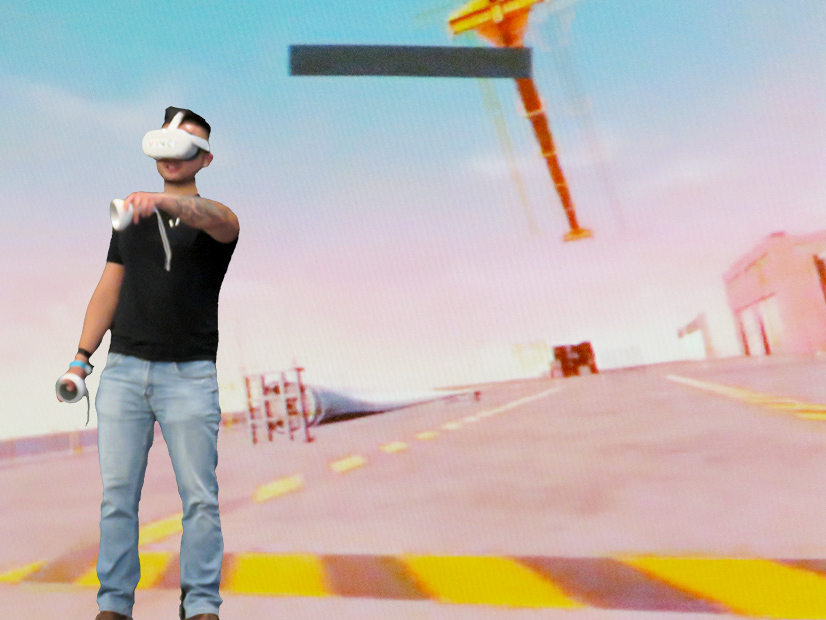RICHMOND, Va. — Europe has about 75,000 technicians trained to work on onshore and offshore wind turbines. The U.S. and Canada have almost as many wind turbines as Europe but only a fraction of the trained technicians at about 13,000, according to Dan Ortega, North American representative for the Global Wind Organisation, a Copenhagen-based nonprofit created by wind turbine manufacturers and operators to standardize training requirements.
Ortega — who described himself as a “matchmaker with those who want the training and those who can provide the training” — said his task is complicated by the cost of building full-scale replicas in which students can perform hands-on training.
Those requirements turned him into an “ambulance chaser,” he joked during a discussion at the Business Network for Offshore Wind’s International Partnering Forum on Wednesday. “Every time somebody dropped a wind turbine component, we were getting on the phone saying, ‘Hey, how broken is it? Can we get it for training?’”
Cynthia Brown, director of turbine maker Siemens Gamesa Renewable Energy’s (BME:SGRE) Wind Academy in Orlando, Fla., understands the challenge. The company has a 2.3-MW and a 3-MW training nacelle — far smaller than the 15-MW turbines it is now manufacturing for offshore use.
And “every two to three years, there’s a new design coming out, right? So having a training on the actual platform [becomes] more difficult,” she said.
Enter virtual reality.
Last October, Siemens Gamesa and virtual reality company Vinci VR won a grant from the Massachusetts Clean Energy Center to develop VR training simulations for offshore wind.

At the IPF conference, Vinci VR demonstrated its software for turbine technicians. It allows students to simulate tightening loose bolts and measuring the air gap in a set of brakes inside a virtual nacelle. It also demonstrated a similar program for port workers, using a virtual crane to lift and move a turbine blade.
Vinci VR CEO Eagle Wu said the training technique is second nature for people like himself who grew up playing video games. “What we found is that a lot of younger trainees … after a couple of minutes of playing around, are actually able to pick it up very quickly.”
The training requires a $300 VR headset plus the software, which Vinci plans to sell for between $10,000 and $30,000, depending on the size of the training provider.
Vinci VR is running beta testing of the software with Siemens Gamesa and the International Brotherhood of Electrical Workers. It plans to expand its software to tasks on crew transfer vessels.
“We basically want to put a wind turbine into every classroom in the U.S.,” Wu said.
Ortega said he’s optimistic that digital solutions will help meet the increasing need for turbine workers. The Bureau of Labor Statistics projects employment of wind turbine service technicians will grow 61% from 2019 to 2029.
Aside from sea survival, the training of technicians for onshore turbines is the same as that for offshore, Ortega said.
Turbine workers’ “skills have to be demonstrated. You cannot, through e-learning, validate somebody’s skills on performing wind turbine rescue or climbing a ladder or, you know, inspecting their harness or something like that. There has to be some physical way of doing this, whether it be videos, virtual reality or [augmented reality],” he said.
“For a lot of training providers, getting access to the equipment that they need to do this training can be somewhat cost-prohibitive, especially if you’re talking community colleges,” he continued. “If you can create a high-fidelity training environment where you can practice the skills, you increase access and training in areas where you may not have had the opportunity before. Additionally, you have the potential of lowering the safety risk, lowering the capital expenses, having a faster setup of a new training center.”



